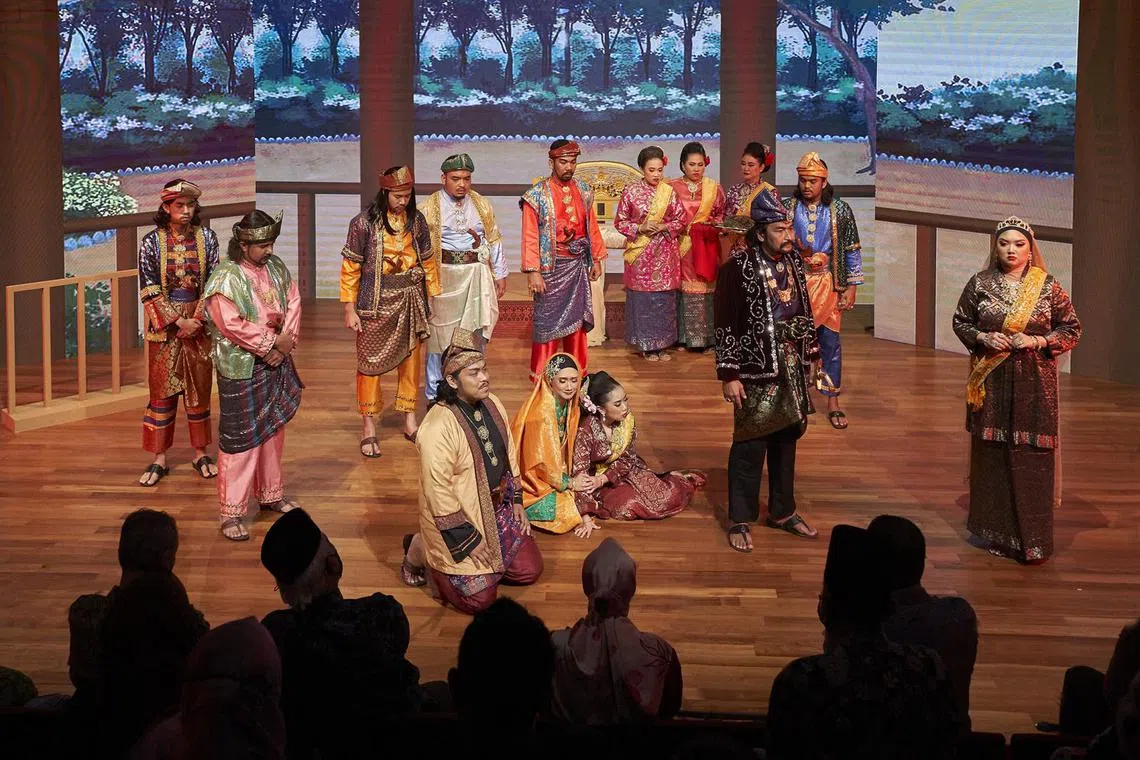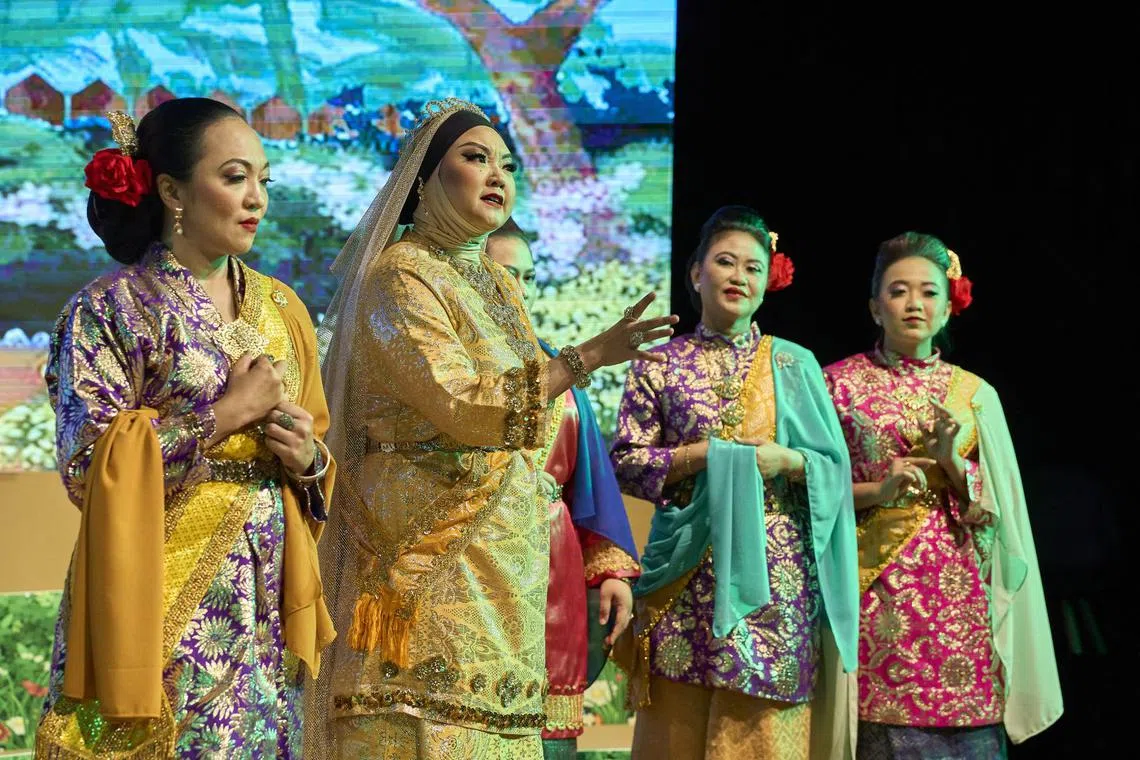Classical Malay opera enjoys a resurgence


Anggerik Temasek Bangsawan has managed to attract new audiences with well-produced shows such as Dang Anum.
THE last straw for Noor Azhar Mohamed came in 2018, when a TV station approached him to do an interview for a documentary on "the dying art" of bangsawan, or Malay classical opera.
The bangsawan buff and sometime practitioner had stopped practising for a while. The only Malay opera troupe in Singapore, Sri Anggerik Bangsawan, was no longer active because its founder had passed on. And Azhar was busy with his day job in education.
But after he did the TV interview, he kept thinking: "This isn't right. Something must be done." So he got together the troupe's former members and revived the troupe under the new name, Anggerik Temasek Bangsawan. ("Anggerik" means "orchid" in Malay.)
And since 2019, the troupe has been remarkably active in promoting bangsawan all around the island, from performing in schools and cultural centres to speaking to the media and government funding bodies.
Today, its shows typically play to full houses, with audiences coming from all races and sections of society. The troupe has also harnessed the power of social media by actively posting photos and videos on Facebook, YouTube and Instagram.
A NEWSLETTER FOR YOU

Friday, 2 pm
Lifestyle
Our picks of the latest dining, travel and leisure options to treat yourself.
Azhar says: "If there's one thing that's really ramped up public interest in what we do, I'd say it's social media."
Bangsawan has its roots in 1870 when a travelling theatre troupe from India visited Penang and performed an extravagant show in Hindustani. It was such a hit among the Malays that they adopted the art form to tell stories of Malay nobles and royalty.
Bangsawan, with its song-and-dance routines and elaborate costumes, was popular in Singapore until the 1990s when TV stations and radios stopped broadcasting it due to declining interest among young audiences.

In recent years, Anggerik has been able to turn that tide by holding workshops for children and teenagers, and encouraging them to pursue the classical art form more seriously.
At its most recent production of Dang Anum (a folk tragedy about a young woman forced to become a king's concubine), the titular character was played by 16-year-old actress Sarah Syazlina Darni.
She says: "I didn't know a thing about bangsawan until I saw an audition notice on Facebook in 2021 and decided to try my luck. When I was accepted for the lead role, I was introduced to a whole new world of performance that is so far removed from the kind of English theatre acting that I normally do.
"I'm so in love with the art form, I'm telling my friends about it and asking some of them to try it."
A bangsawan performer has to undertake several kinds of training, such as acting, singing, dancing and silat (a martial art form). They also learn to speak in a slightly halting, sing-song manner known as lenggok.
Azhar says: "Not every bangsawan troupe in the region has preserved this specific speech pattern. When we perform in Malaysia, older audiences come up to us to commend us, telling us that our production reminds them of the old bangsawan shows they encountered as children."
Interest in the art form has certainly broadened. Nan Hua High School, for instance, has asked the theatre troupe to hold workshops for its mostly Chinese students for three years running. And the troupe has also attracted funding for its first bangsawan festival later this year, which will feature many young performers aged between 6 and 21.
Azhar says: "Our plan to revive bangsawan is definitely working. People are not talking about it as a dying art form anymore."
Copyright SPH Media. All rights reserved.
